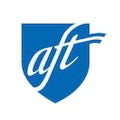Starting the school day ready to learn with school breakfast
by David Gray, Oklahoma Federation of Classified Employees
AFT believes that children’s well-being is the first pillar to equitable, high-quality public education. As we outlined in “Helping Children Thrive,” food security is a top priority for the union’s work on children’s health because AFT members know how hunger affects children in and out of the classroom. We know that starting the school day ready to learn — with a healthy school breakfast — is the first step toward academic success.
Children who eat school breakfast show improved attendance, behavior and test scores, as well as decreased tardiness and fewer visits to the school nurse. These many benefits for children and teachers are why the AFT is part of the Breakfast for Learning Education Alliance. As part of the Alliance, we are working with our partner, the Food Research & Action Center (FRAC), to increase participation in the national School Breakfast Program.
Research shows a clear link between breakfast and learning, but FRAC’s new school breakfast reports shine a light on the fact that too many children still miss out on the benefits of school breakfast. FRAC’s School Breakfast Scorecard found that only 56 low-income students participated in school breakfast for every 100 who ate school lunch in the 2015–2016 school year. Participation varies by state; for example, schools in West Virginia reach over 80 low-income students with school breakfast for every 100 participating in school lunch, while Utah schools reach less than 40 low-income students.
FRAC’s companion report, School Breakfast: Making it Work in Large School Districts, shows that some school districts across the country are meeting the needs of their low-income students by making breakfast readily accessible, while others are not. My district, Oklahoma City Public Schools, could stand to grow. While we have increased the rate of low-income students participating in school breakfast, we are not reaching as many as need this important morning meal.
The good news is that there are proven strategies to increase school breakfast participation. More schools are adopting breakfast after the bell models where breakfast is served in the classroom, from grab-and-go carts in the hallway on the way to class, or during a morning break after homeroom or first period. Schools that have adopted these models are seeing participation grow as a result. The most successful schools also offer free breakfast to all students in schools with high percentages of children eligible for free and reduced-price school meals.
So how can teachers, paraprofessionals and other education personnel ensure that students have the chance to start the day with a healthy breakfast?
· Talk to your school nutrition director, principals and school board about offering breakfast in the classroom to increase participation;
· Ask your school nutrition director for your school’s breakfast participation rates and provide this information to principals, as they often are unaware of how many students participate in school breakfast;
· Inform other school staff and faculty in your school or district about the School Breakfast Program to make sure they know about the academic benefits of participation, barriers to participation, and ways that educators and parents can help encourage students to participate; and
· Check FRAC’s database of schools eligible to offer free breakfast and lunch to all students through the Community Eligibility Provision and discuss whether the program is right for your school with your school nutrition director and principal.
You can also sign up for FRAC’s monthly newsletter, Meals Matter: School Breakfast, to get further information and resources on school breakfast. Together, we can ensure every student starts their day ready to learn.
